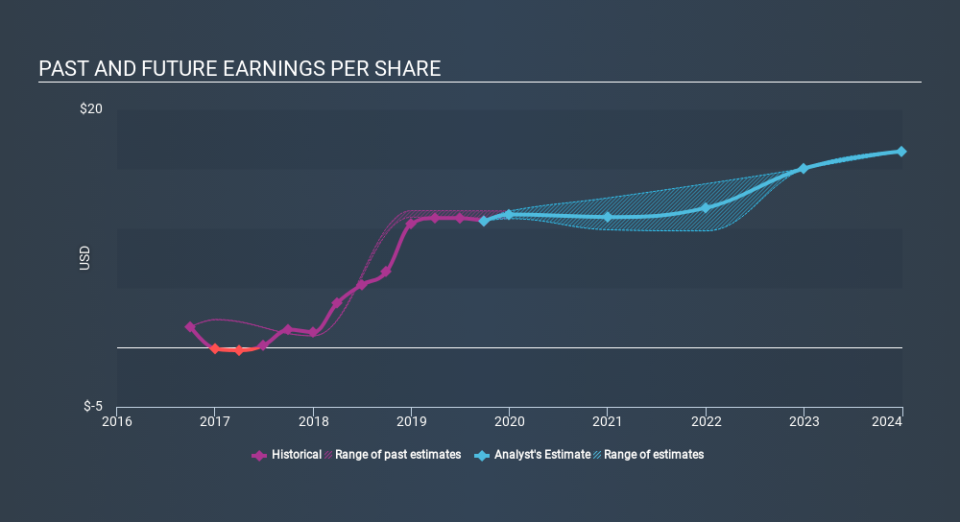Does Caterpillar's (NYSE:CAT) Share Price Gain of 53% Match Its Business Performance?

One simple way to benefit from the stock market is to buy an index fund. But if you pick the right individual stocks, you could make more than that. For example, Caterpillar Inc. (NYSE:CAT) shareholders have seen the share price rise 53% over three years, well in excess of the market return (41%, not including dividends). However, more recent returns haven't been as impressive as that, with the stock returning just 10% in the last year , including dividends .
Check out our latest analysis for Caterpillar
While the efficient markets hypothesis continues to be taught by some, it has been proven that markets are over-reactive dynamic systems, and investors are not always rational. One imperfect but simple way to consider how the market perception of a company has shifted is to compare the change in the earnings per share (EPS) with the share price movement.
Caterpillar was able to grow its EPS at 83% per year over three years, sending the share price higher. The average annual share price increase of 15% is actually lower than the EPS growth. So it seems investors have become more cautious about the company, over time.
You can see how EPS has changed over time in the image below (click on the chart to see the exact values).
We know that Caterpillar has improved its bottom line over the last three years, but what does the future have in store? This free interactive report on Caterpillar's balance sheet strength is a great place to start, if you want to investigate the stock further.
What About Dividends?
As well as measuring the share price return, investors should also consider the total shareholder return (TSR). The TSR is a return calculation that accounts for the value of cash dividends (assuming that any dividend received was reinvested) and the calculated value of any discounted capital raisings and spin-offs. So for companies that pay a generous dividend, the TSR is often a lot higher than the share price return. In the case of Caterpillar, it has a TSR of 66% for the last 3 years. That exceeds its share price return that we previously mentioned. This is largely a result of its dividend payments!
A Different Perspective
Caterpillar shareholders have received returns of 10% over twelve months (even including dividends) , which isn't far from the general market return. We should note here that the five-year TSR is more impressive, at 12% per year. Although the share price growth has slowed, the longer term story points to a business well worth watching. If you would like to research Caterpillar in more detail then you might want to take a look at whether insiders have been buying or selling shares in the company.
Of course Caterpillar may not be the best stock to buy. So you may wish to see this free collection of growth stocks.
Please note, the market returns quoted in this article reflect the market weighted average returns of stocks that currently trade on US exchanges.
If you spot an error that warrants correction, please contact the editor at editorial-team@simplywallst.com. This article by Simply Wall St is general in nature. It does not constitute a recommendation to buy or sell any stock, and does not take account of your objectives, or your financial situation. Simply Wall St has no position in the stocks mentioned.
We aim to bring you long-term focused research analysis driven by fundamental data. Note that our analysis may not factor in the latest price-sensitive company announcements or qualitative material. Thank you for reading.

 Yahoo Finance
Yahoo Finance 
